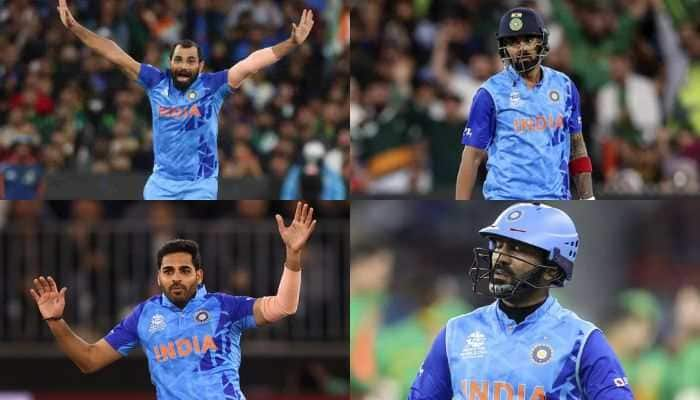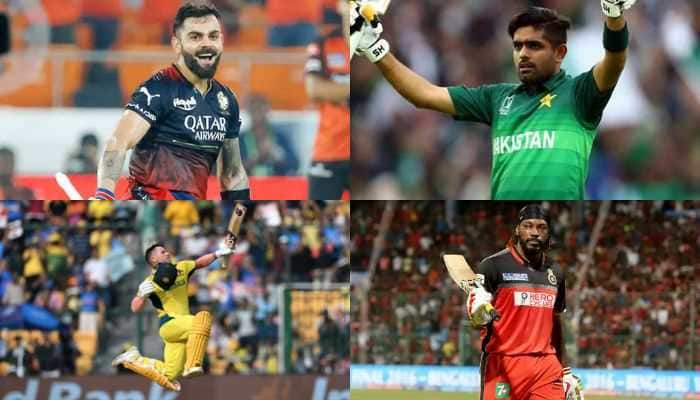'Atal Setu Shows India's Infrastructural Prowess': PM Modi Inaugurates India's Longest Sea Bridge In Maharashtra
Atal Setu is the longest bridge in India and also the longest sea bridge in the country. It will provide faster connectivity to Mumbai International Airport and Navi Mumbai International Airport and will also reduce the travel time from Mumbai to Pune, Goa and South India.
Trending Photos
)
Mumbai: Prime Minister Narendra Modi on Friday inaugurated the Mumbai Trans-Harbour Link (MTHL), now named 'Atal Bihari Vajpayee Sewari-Nhava Sheva Atal Setu', constructed at a cost of over Rs 17,840 crore. PM Modi, after inaugurating the Atal Setu Bridge, said that it ''shows India's infrastructural prowess and march towards being a developed nation.'' "Today is a historic day for Mumbai and Maharashtra, along with the resolve for 'Viksit Bharat'. Today, the nation has received Atal Setu, one of the longest sea bridges in the world. I dedicate Atal Setu to the people," the PM said in his speech.
PM Modi also laid the foundations for multiple developmental projects including the Uran-Kharkopar EMU train service, in Navi Mumbai.
Atal Setu is the longest bridge in India and also the longest sea bridge in the country. It will provide faster connectivity to Mumbai International Airport and Navi Mumbai International Airport and will also reduce the travel time from Mumbai to Pune, Goa and South India.
#WATCH | PM Modi inaugurates Atal Bihari Vajpayee Sewari - Nhava Sheva Atal Setu in Maharashtra
Atal Setu is the longest bridge in India and also the longest sea bridge in the country. It will provide faster connectivity to Mumbai International Airport and Navi Mumbai… pic.twitter.com/2GT2OUkVnC — ANI (@ANI) January 12, 2024
Atal Setu
The Atal Setu is in line with the Prime Minister's vision to improve the 'ease of mobility' of citizens by strengthening urban transport infrastructure and connectivity. The Mumbai Trans-Harbour link (MTHL), now named 'Atal Bihari Vajpayee Sewri - Nhava Sheva Atal Setu' has been built in line with this vision. The foundation stone of the bridge was laid by PM Modi in December 2016. Atal Setu has been constructed at a total cost of more than Rs 17,840 crore. It is about 21.8 km long six-lane bridge with about 16.5 km length over the sea and about 5.5 km of length on the land.
It will provide faster connectivity to Mumbai International Airport and Navi Mumbai International Airport and will also reduce travel time from Mumbai to Pune, Goa and South India. It will also improve connectivity between Mumbai Port and Jawaharlal Nehru Port.
Navi Mumbai Development Projects
At Navi Mumbai, the Prime Minister also unveiled development projects worth more than Rs 12,700 crore in the public programme. Prime Minister also laid the foundation stone of the underground road tunnel connecting Eastern Freeway's Orange Gate to Marine Drive.
The 9.2 km tunnel will be built at a cost of more than Rs 8700 crore and will be a significant infrastructure development in Mumbai which will reduce travel time between Orange Gate and Marine Drive.
Besides, the Prime Minister dedicated phase 1 of the Surya regional bulk drinking water project to the nation. The project, developed at a cost of more than Rs 1,975 crore, will provide drinking water supply to the Palghar and Thane districts of Maharashtra, benefiting about 14 lakh people.
During his day-long programme, the Prime Minister also dedicated about Rs 2000 crore of railway projects to the nation. The Prime Minister inaugurated the 'Bharat Ratnam' (Mega Common Facilitation Centre) for the gems and jewellery sector at Santacruz Electronic Export Processing Zone- Special Economic Zone (SEEPZ SEZ), which is first of its kind in India with "best available machines in the world including 3D Metal printing".
This will house a training school for the skilling of the workforce for this sector, including specially-abled students. The Mega CFC will transform the export sector in the gems and jewellery trade and will also help domestic manufacturing.
Speed Limits Set For Mumbai Trans Harbour Link (MTHL)
In a bid to ensure safety and streamline traffic on the Mumbai Trans Harbour Link (MTHL), authorities have established specific speed limits for different vehicles.
Maximum Speed For Four-Wheelers: 100 Kmph
The maximum speed allowed for four-wheelers, including cars, taxis, light motor vehicles, minibuses, and two-axle buses, on the MTHL is set at 100 kilometres per hour. However, this limit undergoes variation during the ascent and descent of the bridge, where the speed is restricted to 40 kilometres per hour.
Vehicle Restrictions On The Sea Bridge
Mumbai Police have outlined a comprehensive list of vehicles not permitted on the sea bridge. Motorbikes, auto rickshaws, tractors, motorcycles, mopeds, three-wheelers, animal-drawn vehicles, and slow-moving vehicles fall under the category of restricted vehicles.
Multi-axle heavy vehicles, trucks, and buses heading towards Mumbai are barred from entry on the Eastern Freeway. These vehicles are directed to take the Mumbai Port-Sewri Exit (Exit 1C) and utilize the MBPT Road near 'Gadi Adda' for further movement.
Enforcing Speed Limits For Safety
The implementation of speed limits on the MTHL by the Mumbai Police is a strategic move aimed at curbing potential dangers, obstructions, and inconveniences to the public. The restrictions not only ensure the safety of commuters but also contribute to the efficient functioning of one of India's longest sea bridges.







)
)
)
)
)
)
)
)
)
)
